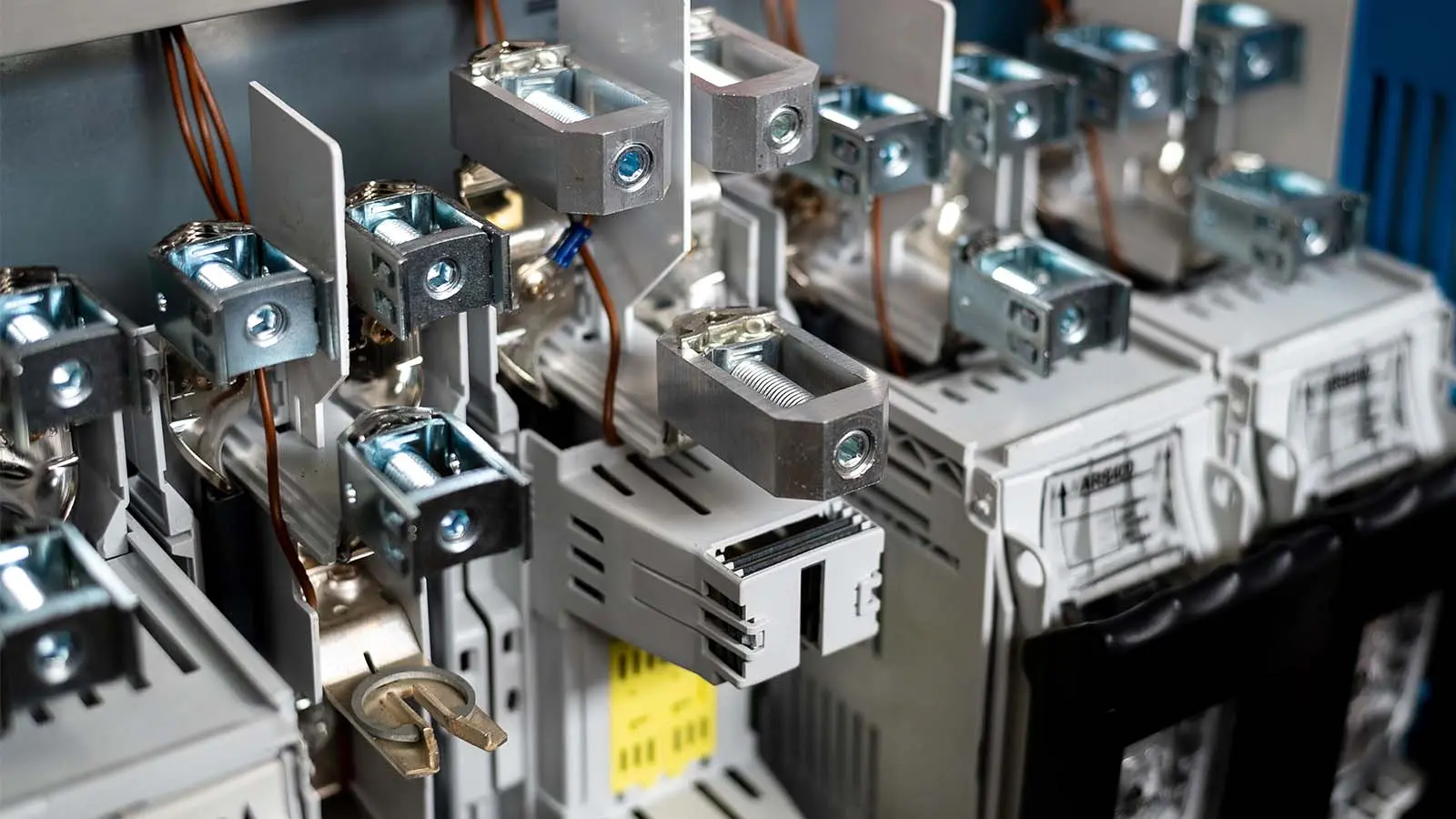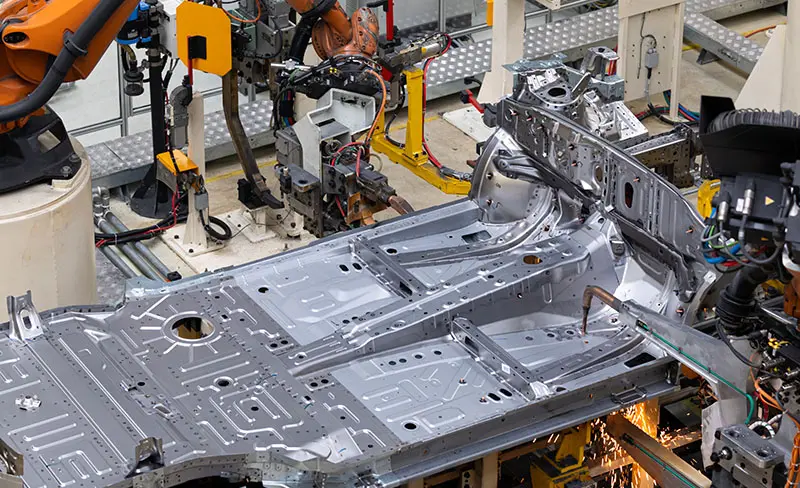Top 5 Die Casting Materials: Properties, Applications, and Selection Guide
- Release Date: April 28, 2024
Top 5 Die Casting Materials: Properties, Applications, and Selection Guide
Introduction to Die Casting Materials
Die casting is a precision manufacturing process that involves injecting molten metal into a reusable mold cavity at high pressure. This technique is crucial in producing complex, intricate components with tight tolerances. The choice of die-casting material, such as aluminum, zinc, or magnesium alloys, significantly influences the final product’s performance, including its strength, durability, and weight. Material selection is vital, as it directly affects the product’s functionality, cost, and sustainability. High-quality die-casting materials ensure reliable performance in applications ranging from automotive to consumer electronics, making material selection a critical step in the manufacturing process.
Die Casting Materials
1. Aluminum Die Casting
- Properties and Benefits of Aluminum for Die Casting
Aluminum die casting offers numerous advantages for manufacturers due to its low melting point, which reduces energy consumption during the casting process. Its high thermal conductivity allows for efficient heat transfer, making it ideal for components that require rapid dissipation of heat. Additionally, aluminum’s excellent recyclability contributes to sustainable manufacturing practices. These properties make aluminum a popular choice for producing lightweight, high-strength parts across industries, from automotive to consumer electronics.
- Common Applications of Aluminum Die Castings
Aluminum die castings are widely utilized across various industries for their strength, lightness, and design flexibility. A prominent example is the automotive industry, where aluminum castings are employed to produce engine blocks, transmission housings, and suspension components. These lightweight parts contribute to improved fuel efficiency and overall vehicle performance. In the consumer electronics sector, aluminum is the material of choice for manufacturing laptop casings, smartphone frames, and camera bodies, thanks to its ability to provide a combination of durability and aesthetic appeal. Additionally, the machinery parts industry benefits from aluminum die castings, using them for creating robust components like pump housings and electrical enclosures that require high resistance to corrosion and wear. These applications highlight aluminum’s versatility and its integral role in modern manufacturing processes.
2. Zinc Die Casting
- Characteristics of Zinc in Die Casting Processes
Zinc is an ideal material for die casting due to its exceptional mechanical properties at room temperature and inherent corrosion resistance. Its high plasticity allows for the creation of intricate designs with excellent dimensional stability. Zinc’s natural resistance to corrosion makes it suitable for applications exposed to various environmental conditions. These properties, combined with its low melting point and recyclability, make zinc a popular choice for a wide range of die-casting applications, from automotive components to electronic housings.
- Industries and Products Utilizing Zinc Die Castings
Zinc die casting is a versatile process with a wide range of applications across different industries. In the hardware sector, zinc is commonly used to produce items such as door handles, hinges, and locks due to its strength and corrosion resistance. These zinc die-castings provide durability and longevity, making them ideal for everyday use. In the electrical components industry, zinc’s excellent conductivity and shielding properties make it a preferred material for manufacturing electronic casings, circuit breakers, and fuse boxes. The automotive industry also benefits from zinc die castings, utilizing them for components like brake parts, switch housings, and sensor covers. These applications demonstrate the adaptability and reliability of zinc in meeting the demands of various manufacturing processes.
3. Magnesium Die Casting
- Lightweight Advantages of Magnesium in Die Casting
Magnesium’s unique combination of low density and high strength-to-weight ratio positions it as an ideal material for applications where weight reduction is paramount. This metal’s lightness allows for the creation of components that are both strong and lightweight, making it perfect for industries where reducing mass is crucial for enhancing performance. From automotive parts to consumer electronics and aerospace components, magnesium die castings offer a significant advantage in improving fuel efficiency, increasing payload capacity, and boosting overall product performance without compromising on structural integrity.
- Specific Applications Where Magnesium Die Castings Excel
Magnesium die castings are highly valued across various industries for their exceptional strength-to-weight ratio, making them ideal for applications where reducing weight is essential. In the aerospace industry, magnesium components are used in aircraft and satellite structures, contributing to fuel efficiency and overall performance. The portable electronics sector also benefits from magnesium die castings, with applications in laptop housings, smartphone shells, and tablet casings, enhancing portability without sacrificing durability. Additionally, the automotive industry leverages magnesium for lightweight components such as gearbox housings, steering wheels, and seat frames, leading to improved fuel economy and reduced emissions. These applications underscore the versatility and importance of magnesium die castings in modern manufacturing.
4. Copper Alloy Die Casting
- Thermal and Electrical Conductivity of Copper Alloys in Die Casting
Copper alloys are renowned for their superior thermal and electrical conductivity, making them the material of choice for applications demanding efficient heat dissipation or reliable electrical connectivity. This exceptional property suite positions copper alloys as ideal candidates for manufacturing components in industries such as electronics, telecommunications, and energy production. From circuit boards to heat sinks and electrical wiring, copper alloys ensure optimal performance and longevity in a wide array of critical applications.
- Die Casting Applications for Copper Alloys in Various Sectors
Copper alloy die castings are widely utilized across various industries due to their excellent thermal and electrical conductivity. In the electronics industry, copper alloys are employed in the manufacturing of circuit boards, connectors, and heat sinks, ensuring efficient performance of electronic devices. The telecommunications sector also benefits from copper alloy components, using them in network infrastructure and cable systems for reliable signal transmission. Additionally, the automotive industry leverages copper alloy die castings for parts such as sensor housings, electrical contacts, and radiator components, contributing to the vehicle’s overall functionality and safety. These applications underscore the versatility and importance of copper alloys in modern manufacturing processes.
5. Steel and Iron die-casting
- Strength and Durability of Steel and Iron Die Castings
Steel and iron die castings are known for their exceptional strength and durability, making them ideal for heavy-duty applications. These metal castings can withstand significant stress and pressure, making them suitable for use in construction equipment, automotive components, and machinery parts. Their robustness and resilience ensure long-lasting performance in demanding environments, providing manufacturers with reliable solutions for a variety of industrial needs.
- Heavy-Duty Applications for Steel and Iron Castings
Steel and iron die castings are favored for their resilience and load-bearing capacity, making them perfect for a range of heavy-duty applications. In the realm of heavy machinery, components such as gears, sprockets, and chassis parts are often produced through die casting, offering the necessary durability to handle the rigors of operation. The automotive industry also relies on steel and iron die castings for structural components like engine blocks, suspension systems, and brake calipers, where strength and safety are paramount. Furthermore, industrial equipment manufacturers utilize these castings for machine tool housings, pump casings, and valve bodies, where the components must endure harsh working conditions and resist wear. These applications exemplify the versatility and reliability of steel and iron in die casting for high-stress environments.
Die Casting Material Selection Criteria
- Factors Influencing Material Choice in Die Casting
Material selection in die casting is a critical decision influenced by several factors. Mechanical properties, such as strength and ductility, are essential for withstanding operational stresses. Thermal properties, including conductivity and heat resistance, are vital for components exposed to temperature extremes. Cost is a significant consideration, affecting both production and end-user pricing. Availability ensures a stable supply chain, crucial for uninterrupted manufacturing. Balancing these factors is key to selecting the optimal material for any die-casting application.
- Balancing Performance Needs with Cost Efficiency
Material selection in die casting demands a strategic trade-off between performance requirements and cost efficiency. Each material brings a unique set of properties to the table, addressing specific needs. For example, high-strength alloys may excel in performance but come at a premium, while more affordable options might compromise on certain attributes. The decision hinges on the application’s demands, production volume, and budget. Striking the right balance ensures products meet both functional and financial goals, optimizing the manufacturing process for success.
Environmental Impact and Die Casting Materials
- Sustainability in Die Casting Material Choices
Environmental considerations significantly influence die-casting material selection. The energy required for production is a key factor, with some materials demanding more resources than others. Recyclability is also crucial, as it reduces waste and conserves natural resources. End-of-life disposal is another concern, to minimize environmental impact. Choosing materials that balance these factors is essential for sustainable manufacturing practices.
- Recycling and Lifecycle Considerations
Recycling die-casting materials is vital for reducing environmental impact. It conserves resources, decreases energy consumption, and limits waste generation. Lifecycle assessment of die-casting components further aids in understanding their environmental footprint, from production to disposal. This knowledge guides manufacturers in making sustainable choices, promoting eco-friendly manufacturing practices, and contributing to a circular economy.
Future Trends in Die Casting Materials
- Emerging Materials and Technological Advances
The die-casting industry is evolving with the introduction of innovative materials. High-strength aluminum alloys offer enhanced mechanical properties, making them ideal for demanding applications without compromising weight. Similarly, advanced magnesium alloys provide exceptional strength-to-weight ratios, pushing the boundaries of design and performance. These emerging materials open new possibilities for complex, high-precision components across various sectors.
- Anticipated Developments in Die Casting Applications
Future die-casting applications may see significant advancements thanks to material innovations and technological progress. Expect lighter, stronger components across industries, from automotive to aerospace, as new alloys and processes emerge. These developments will likely enhance efficiency, performance, and sustainability in manufacturing.
Real-world Case Studies
Case Study 1: Aluminum Die Casting in the Automotive Industry
Aluminum die castings play a pivotal role in the automotive industry, particularly in weight reduction and enhancing fuel efficiency. Such as the integration of aluminum die-cast components in a vehicle’s engine block and suspension system, these lightweight parts not only decrease the overall mass of the car but also improve its power-to-weight ratio, leading to better fuel economy. The high strength-to-weight ratio of aluminum allows for thinner yet stronger parts, which is crucial for modern vehicles aiming to meet strict emissions standards. This case study exemplifies the impact of material choice on the performance and sustainability of automotive design.
Case Study 2: Zinc Die Casting in the Electronics Sector
In the electronics sector, zinc die castings offer a compelling solution for manufacturers. For instance, in their use in the production of electronic casings and enclosures, Zinc’s natural conductivity and shielding properties effectively protect sensitive components from electromagnetic interference. Additionally, zinc’s cost-effectiveness provides a budget-friendly option without compromising performance. This case study underscores zinc’s role in creating durable, efficient, and affordable electronic components.
Conclusion
Die-casting materials and their applications are diverse, with each material offering unique properties that influence the performance and cost of die-casting components. Aluminum, for instance, is favored for its lightweight and high-strength characteristics, making it ideal for automotive and aerospace applications. Zinc die castings are known for their conductivity and are commonly used in the electronics sector. Magnesium alloys provide exceptional strength-to-weight ratios, suitable for applications where weight reduction is critical. The selection of the right material is crucial, as it directly impacts product performance, durability, and cost-efficiency.
As we look to the future, advancements in material science and technology are expected to introduce new and improved die-casting materials. These innovations will likely enhance the capabilities of die-casting components, enabling manufacturers to produce more complex, efficient, and cost-effective products. Additionally, there is a growing focus on sustainability, with an emphasis on the development of recyclable and environmentally friendly materials. The potential impact on the manufacturing industry is significant, as these trends can drive improvements in product quality, production efficiency, and sustainability.
Further Reading
Try NOWfab Now!
All information and uploads are secure and confidential.
Latest Blog Posts
Stay at the forefront of industry innovation by reading our latest blog post.












